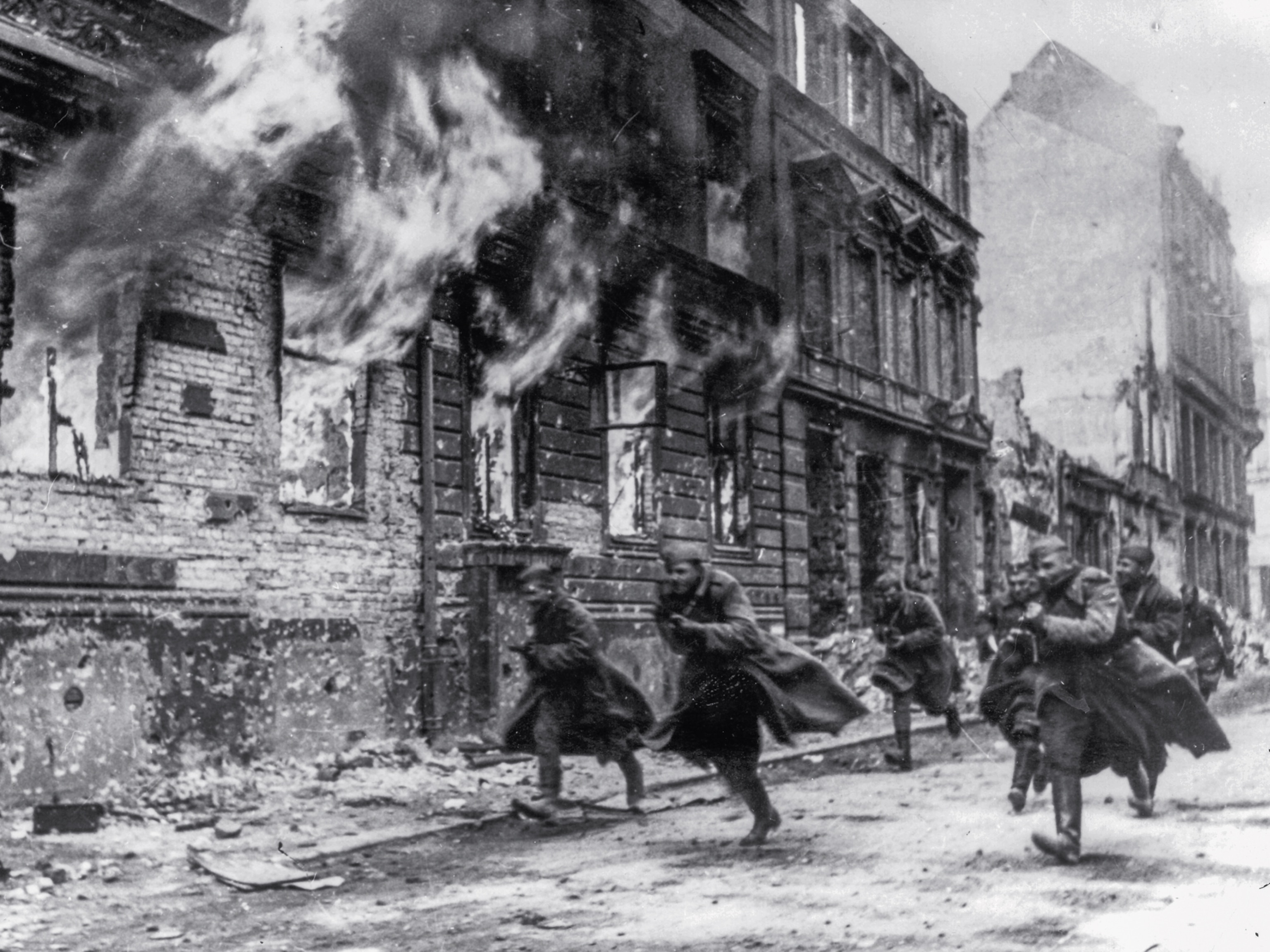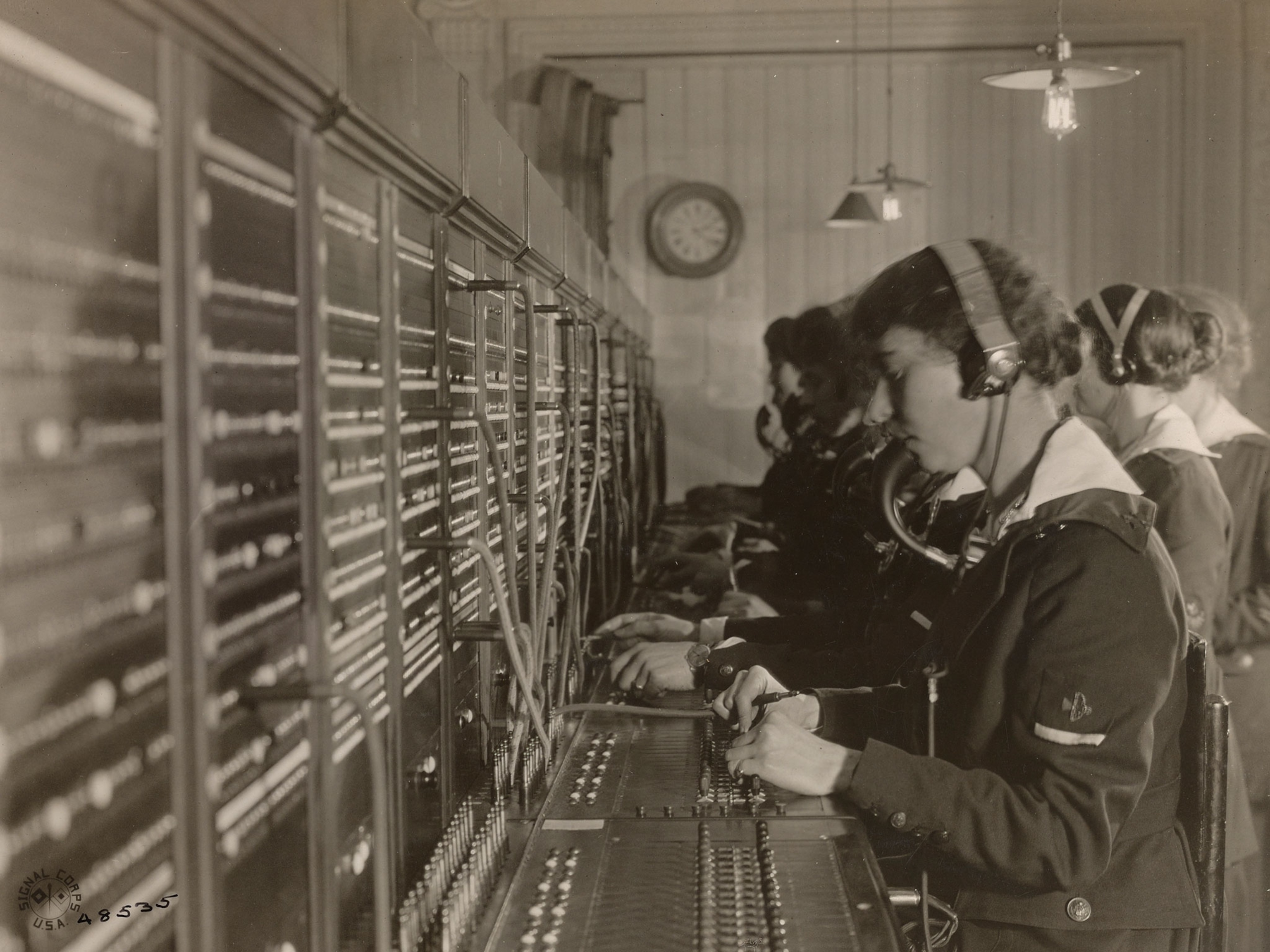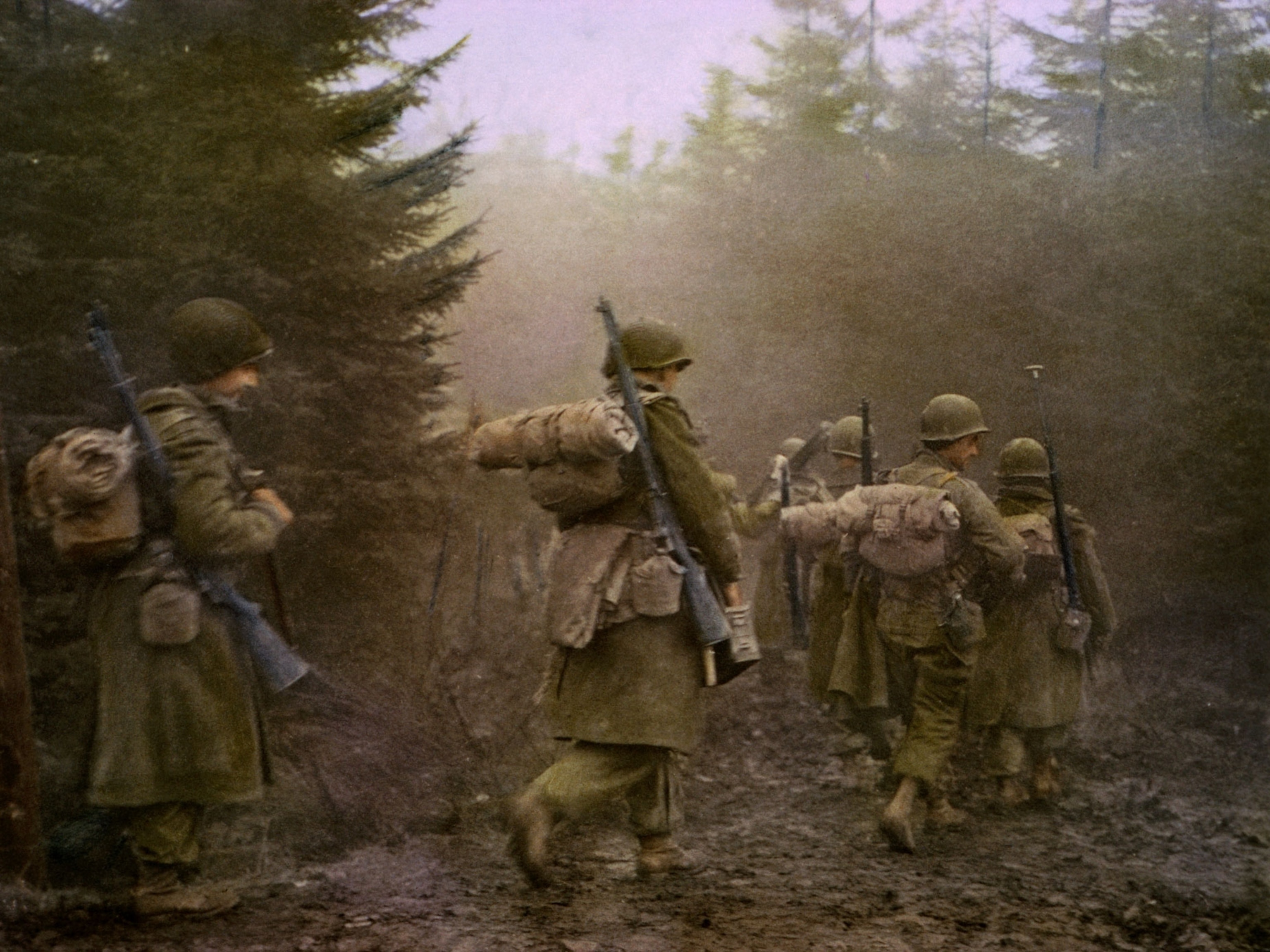The Marines were last to integrate. Here are the stories of the first Black recruits.
80 years after the Montford Point Camp was established to train enlisted African Americans, relatives and other Marines fight to document their contributions before it’s too late.

Jacksonville, North Carolina — The first thing Carroll William Braxton remembers about June of 1943 is the heat. It was hot in Manassas, Virginia when he and two buddies caught a train to Quantico, and then another to Jacksonville, North Carolina. Braxton was 18, and as World War II engulfed more of America’s mental and physical bandwidth, he didn’t want to wait to be drafted. He wanted one of those sharp, blue uniforms sported by United States Marines.
Then came the scorching abuse.
“They made us line up and empty our pockets, and shouted, ‘We don't want those knives in here,’ I guess they thought we always had knives, you know," Braxton says. "And I remember I was wearing a hat, and this MP threw it on the ground and stomped on it. And he proceeded to call me every kind of “n----r’ you can think of, and it seems like he was never going to stop.”
The 98-year-old's shared memory of this experience comes in late August while he’s seated in what was once the mess hall for recruits at the former Montford Point Marines Training Camp. Established in 1942, the building was decommissioned in 1949 and is now part of a museum honoring the service of approximately 20,000 men who became the first Black recruits in the U.S. Marines Corps.


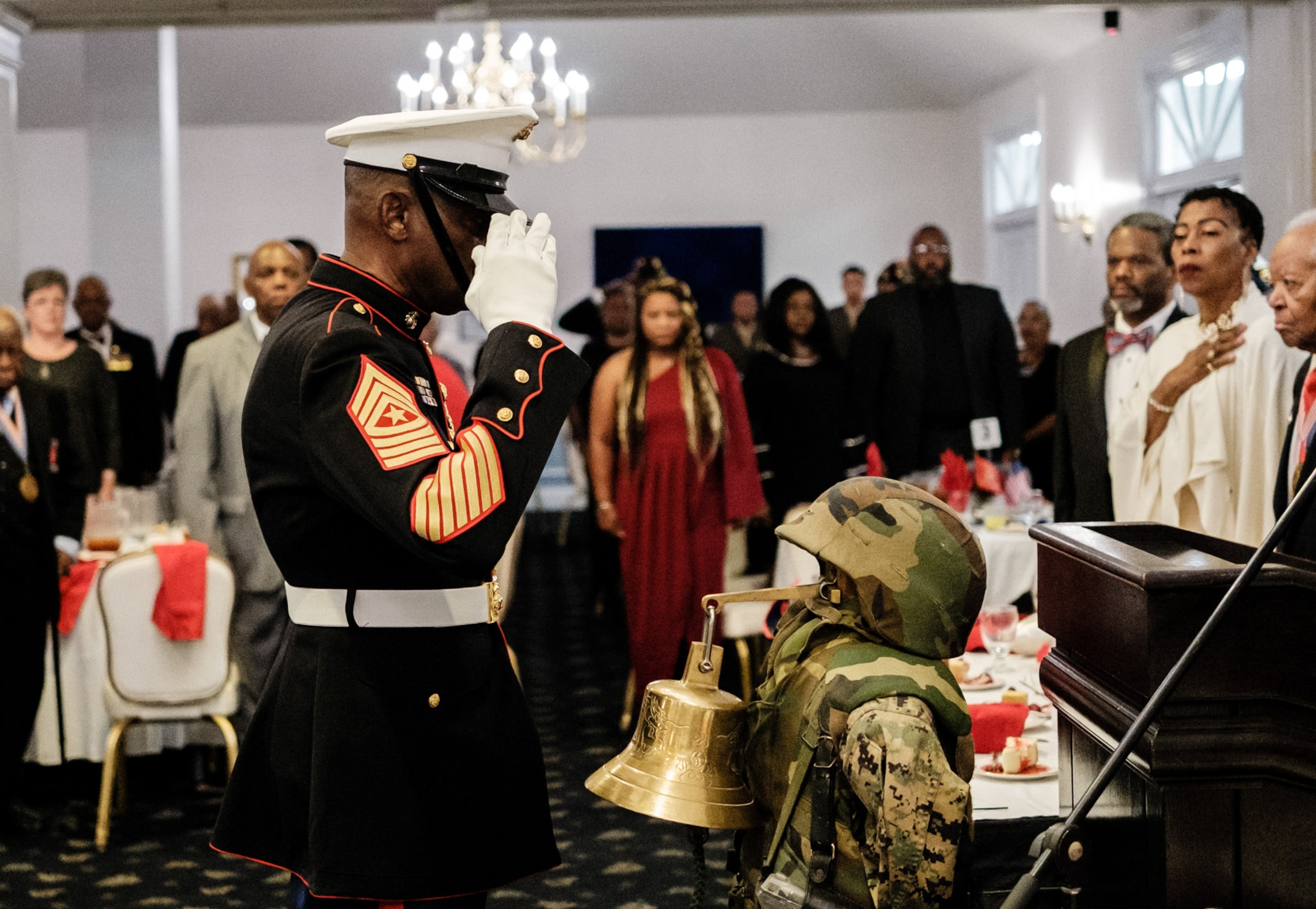
On this recent summer day, Braxton and four other original Montford Point Marines donned their blue woolen jackets adorned with ribbons and medals, and blue hats with red piping and gold lettering. They sat in the first row of metal folding chairs. Some gripped canes, others needed no assistance to stand at attention. All now in their mid to late-90’s, they were joined by the families of 11 other men who had trained at what is now known as Camp Johnson, a satellite school for the nearby Camp Lejeune.
During the 57th annual convention of the National Montford Point Marine Association, Inc., family members received bronze replicas of the Congressional Gold Medal that was originally awarded to those history-making recruits in 2012.
But 80 years after the Montford Point Camp was carved out of a swampy woody 1,600-acre peninsula near Jacksonville, many of those who followed those recruits are in a race against time. They want more men like Braxton to know that their service is lauded in the same vein as the 54th Massachusetts Infantry Regiment, the Buffalo Soldiers, or the Tuskeegee Airmen, aka the “Red Tails.”

“We estimate there are about 16,000 names that we still haven’t been able to locate and verify,” says the association’s president, James Averhart, Jr., a retired chief warrant officer 5. “That’s 16,000 families who may not realize the sacrifice and service of a father or grandfather. It is an inherent obligation that we identify these individuals and acknowledge their service.”
Prohibiting racial discrimination
The year 1941 was a tipping point in U.S. military history. African Americans had served their country in battles as far back as the Revolutionary War, but by that year the Marine Corps was the only branch of the military still refusing to allow them to join.
As the nation prepared to fully engage in WWII, the need for recruits rose exponentially. Iconic civil rights leader A. Phillip Randolph saw an opportunity to ignite the issues of equity and access. He had organized and led the first African American labor union—the Brotherhood of Sleeping Car Porters—and was planning a march on Washington for more defense industry opportunities and better treatment of Blacks in the military, where racism and segregation within ranks was still rife. Even then Commandant, Major General Thomas Holcomb, rejected the possibility of Black recruits: “If it were a question of having a Marine Corps of 5,000 whites or 250,000 Negroes, I would rather the whites,” he is reported to have said.

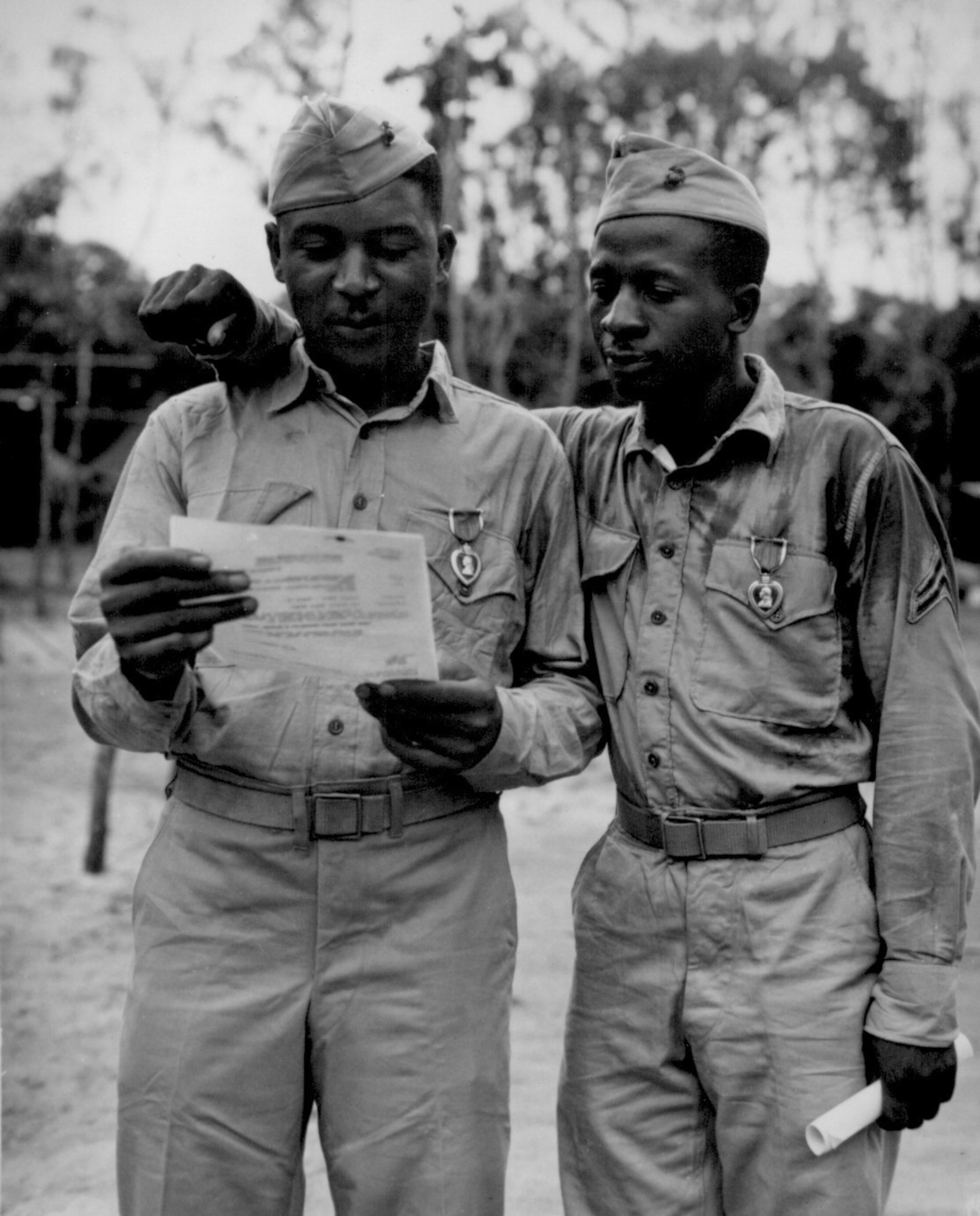
But on June 25, 1941—a week before Randolph’s planned march on Washington—President Franklin D. Roosevelt signed an executive order, which prohibited racial discrimination in the defense industry or in government. Almost a year later, the first Black recruits arrived at Montford Point, and some helped clear the land and construct the barracks.
This was the history that Chicago native Joe Geeter virtually stumbled across after enlisting in the Marine Corps in 1976. At his first permanent duty station at Camp Pendleton, the young lance corporal served under Master Gunnery Sgt. Joseph Abrams, Sr. whom he’d bonded with and admired for his expertise in logistics. When Abrams learned Geeter had been assigned to Okinawa in 1978, he handed the young recruit a book called Blacks in the Marine Corps, to read during his journey to the Far East.
You have to wonder about him and all the Black men in the military who fought so hard for their country, and who when they came home, in some cases they were almost invisible.Mallorie Berger, Montford Point Marine advocate
By the time that 15-hour flight had ended, Geeter had not only learned about Montford Point, he realized that Abrams had been one of those first Black recruits.
“I was just fascinated,” says Geeter, who was in the Marines for 25 years and served two terms as president of the Montford Point Marines Association. “To think of what they found when they first got there and what they had to persevere and endure. At that time, the vast majority of Black recruits never saw a Black officer, never saw anyone who looked like them in position of authority. I realized that I hadn’t learned about this for no reason.”
Today, the 850 square-foot basement of Geeter’s suburban Philadelphia home is filled with framed photographs, books, documents, plaques, trophies, artwork, and countless other Marine memorabilia. But the most prized item is the dress blue jacket that belonged to Louis Roundtree, the most decorated of all the original Montford Point Marines. He retired as a sergeant major and was a heralded veteran of the Korea and Vietnam Wars.
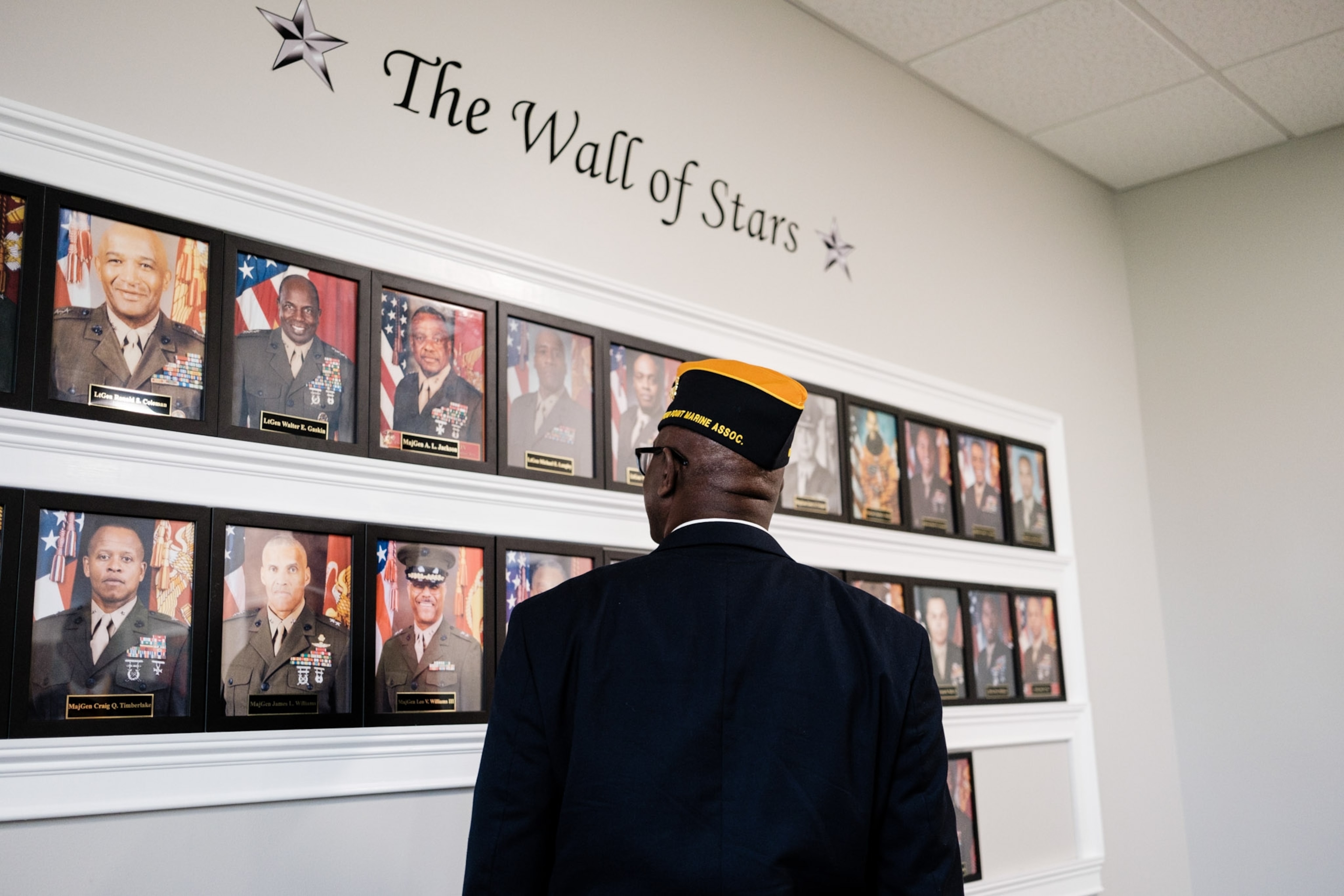
After his death in 2004, Roundtree’s widow Famie offered the jacket and other personal items to Geeter who initially refused them all. She finally had the treasured memento placed on the back seat of Geeter’s car during a visit, so that when he got home, he wouldn’t be able to return it.
“I know all of these items belong in a museum, and we’re moving in that direction,” Geeter says. “But right now, finding the remaining Montford Pointers who are still with us is the main focus.”
Generations of service
If there’s a common theme that unites most of the families of Montford Point Marine recruits, it’s the fact that few knew their father or grandfather was a member of that group.
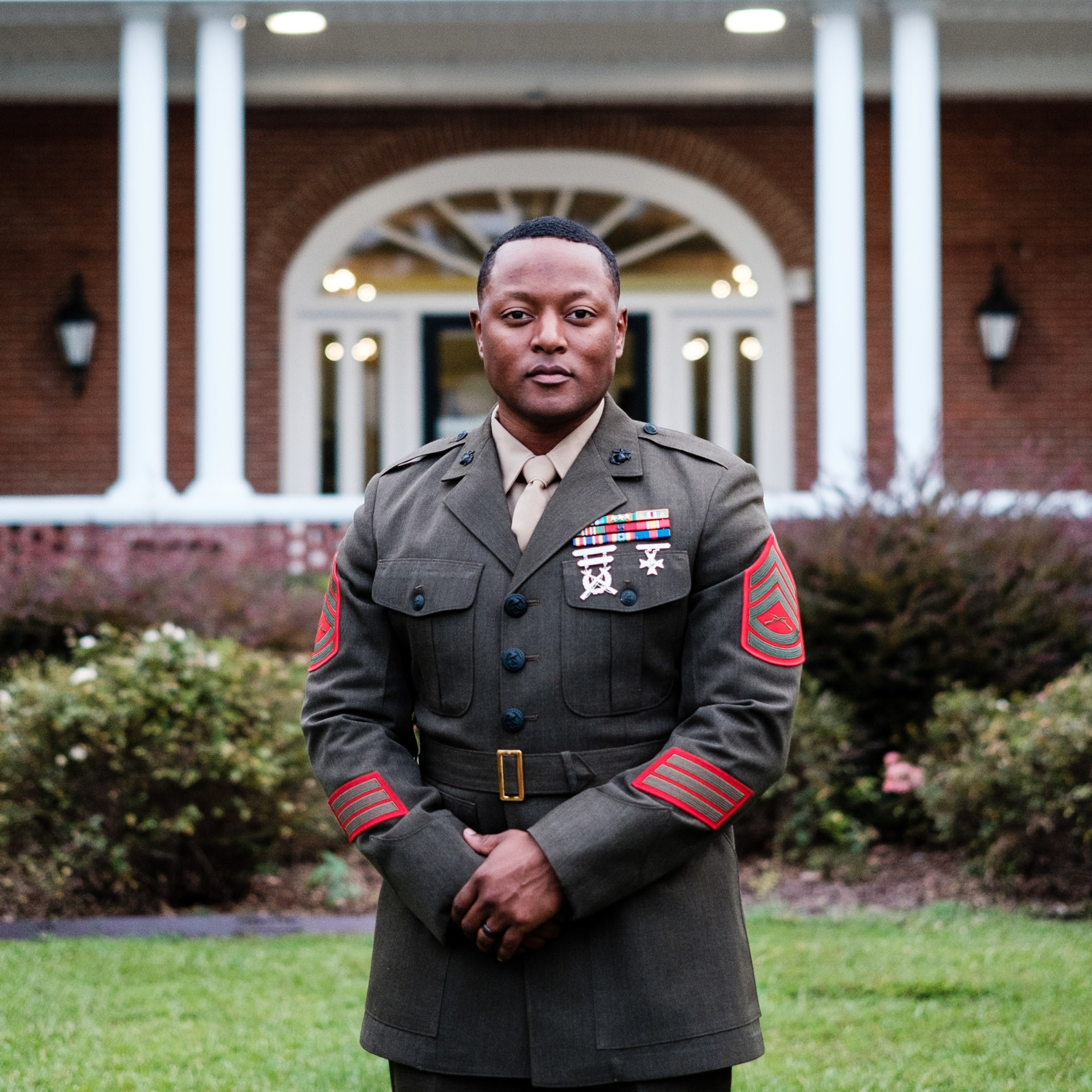
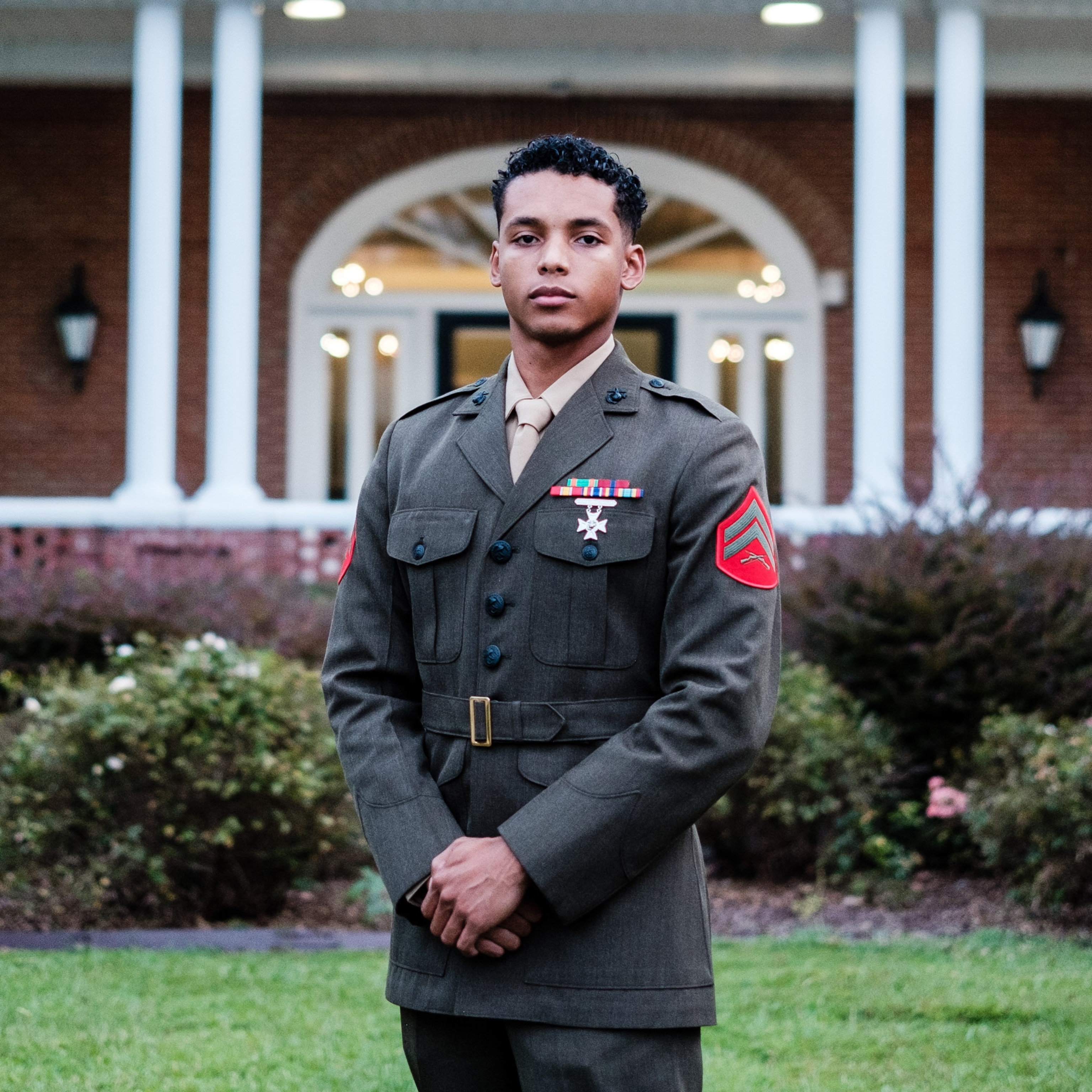
Reginald Moore was stunned to learn that his grandfather had served. He found out following his father Charles’s funeral in February of 1997. Moore, who joined the Marines in 1993, opted to wear his military uniform for the service. After the burial, his grandfather, Morris Ruffin, told him he too had served.
“I was completely floored,” Moore says. “He mentioned that he served in 1942 under a man named ‘Hashmark’ Johnson, but I had no idea who that was… It wasn’t until about 15 years later that I got invited to a Montford Point event at their lodge in Jacksonville, and there was this roll call picture on the wall, and the name ‘Ruffin’ was on it. That’s when it hit me—it was my grandfather.”
Moore tried learning more about his grandfather’s service with little success until late 2021, when a childhood friend from his hometown in Indiana contacted him with news about her own grandfather, Maurice Burns, who’d trained at Montford Point throughout 1944 and 45.
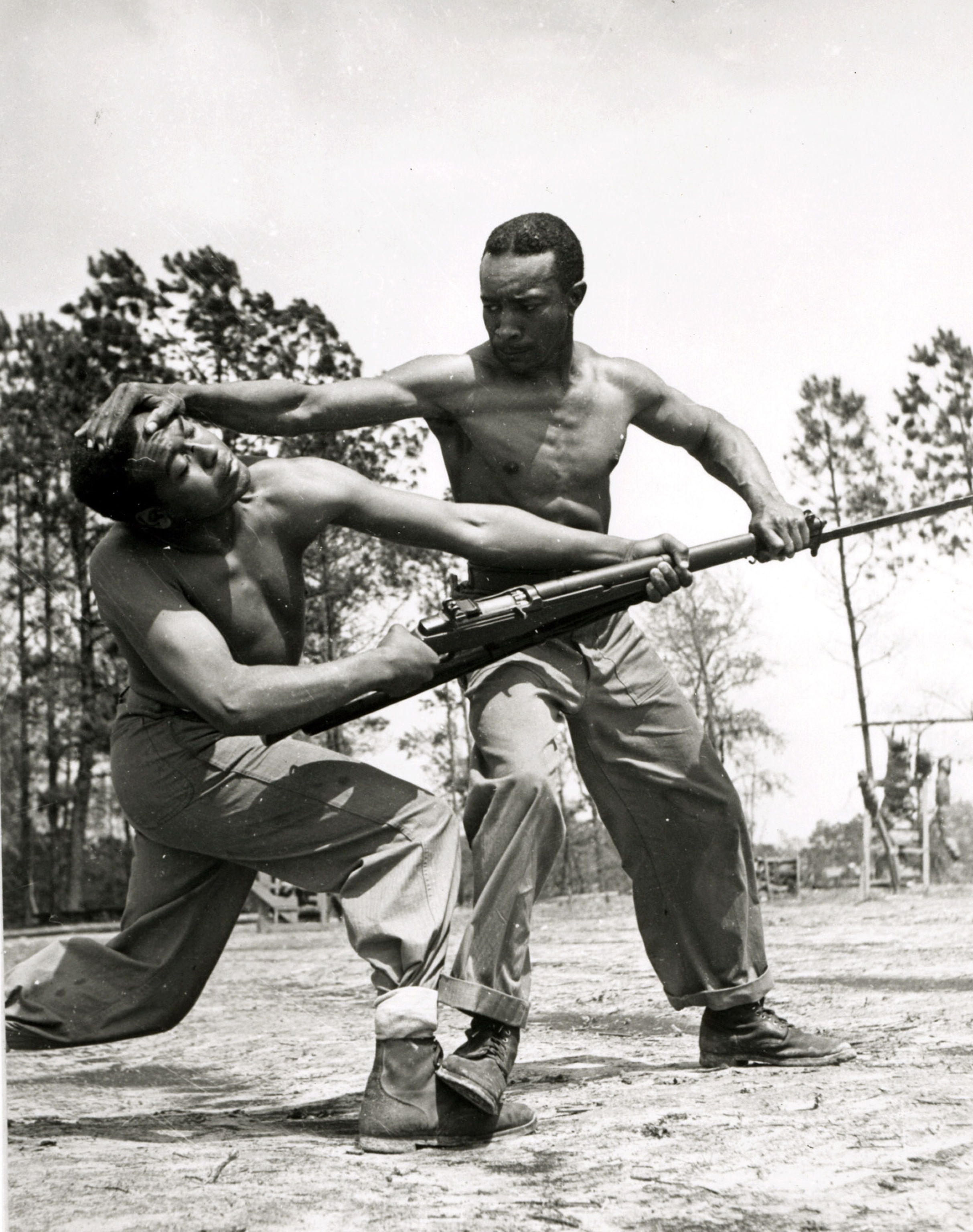
“I always wondered why on Earth a man with a wife and three little children would sign up for the Marines,” says Mallorie Berger, who devotes most of her time to helping locate surviving Montford Point Marines and their families. “But then I realized he was from Talladega, Alabama, and it was a time when a man like him thought he could join the military and make life better for his family. Most of the other recruits were in their teens. My grandfather was in his 30s.”
Berger remembers “Papa Burns” as a handsome, light bronze, tall and thin man who walked with a cane but whose energy could light up a room. He was a brick mason by trade who had an incredible green thumb. Still, at times there was a sadness about Papa Burns, and Berger thinks it may have had to do with his time at Montford Point, at least in part. After all, he was going through grueling basic training. When he couldn’t move as quickly or as fluidly as his teenage peers, drill instructors would sit on his back and force him into strenuous positions, according to Berger, adding that her grandfather spent 26 years in agonizing pain after he left Montford.
The fact that they sacrificed so much, just to prove that they had the courage and patriotism to defend our country, is far too important to neglect.Joe Geeter, Master Gunnery Sgt. USMC
By 1969, Burns was fully disabled. “He even reached out to the V.A. in 1970 to try and get medical assistance for his back, and they accused him of gold-bricking,” says Berger, who wears his military dog tags on silver chain around her neck. “You have to wonder about him and all the Black men in the military who fought so hard for their country, and who when they came home, in some cases they were almost invisible.”
Efforts to document Marine history
The effort to document the contributions of the 20,000 recruits has largely fallen on the few remaining survivors and their relatives. People like Berger’s grandfather were diligent about labeling photographs of their fellow Black recruits with their names, years of service, and even home addresses in graduation books. Others created local Montford Point Marine chapters and invited younger generations of Marines to attend.
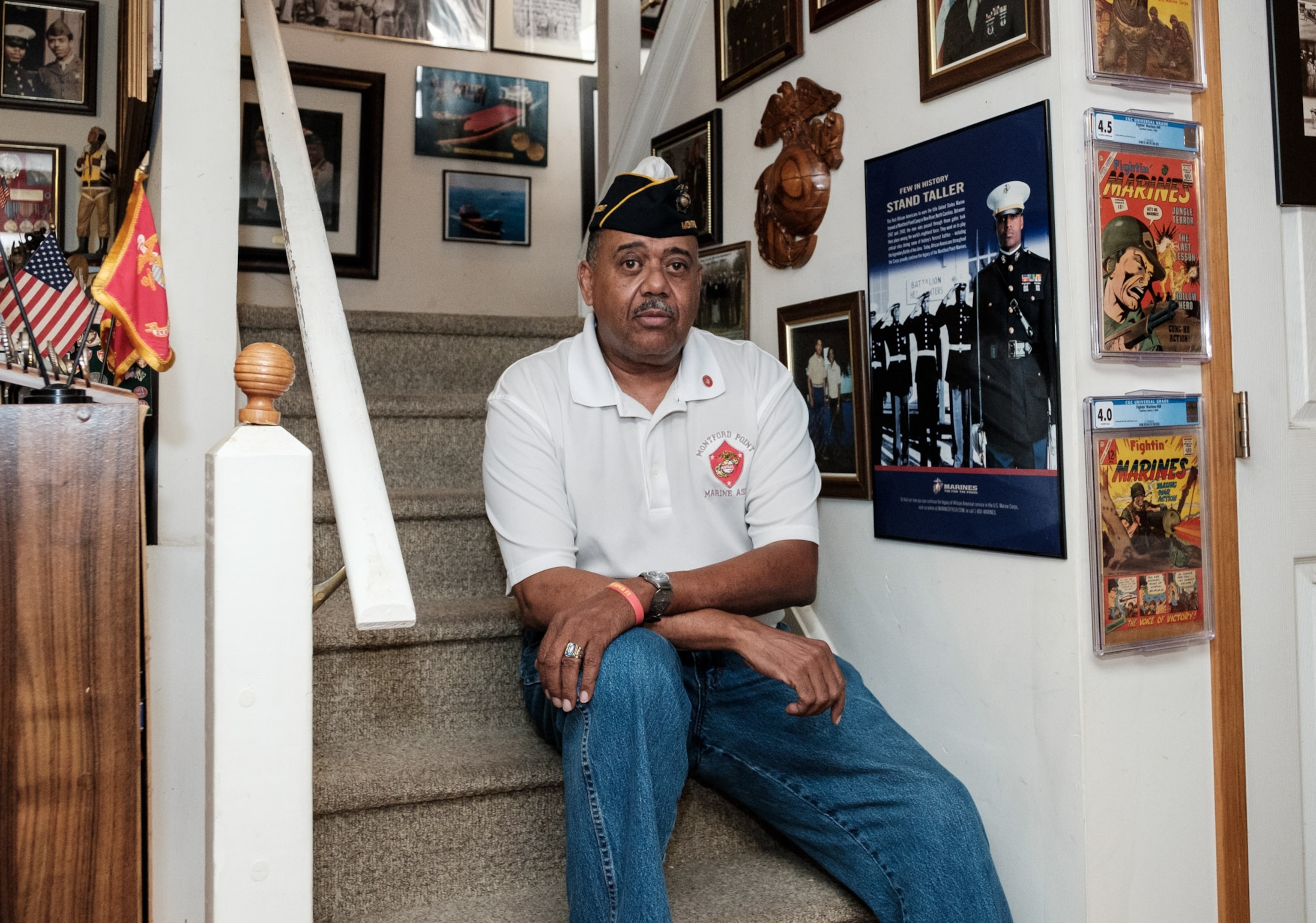
Today, Geeter, a retired master gunnery sergeant, travels the country attending chapter meetings and spends hours each week visiting local surviving Montford Pointers like 94-year-old retired Sgt. Henry Wilcots, Jr., who now lives in a suburban Philadelphia assisted living facility.
For Wilcots, who was born in Des Moines, Iowa in 1928 to a nurse and a janitor, mistreatment due to his skin color was an alien concept.
“Our neighborhood had Jews and Italians and Germans, you name it,” says Wilcots, who enlisted in 1946. He had dreams of becoming an architect and thought military service could help make that happen. His father warned him about what he would likely face in the South, but it didn’t register with Wilcots. Besides, two of his favorite cousins had returned from serving in WWII wearing the sharpest uniforms and boasting about how training had made men of them. “They said, ‘Man, when they get through with you, your s—t will have muscles,’ ” Wilcots recalled.

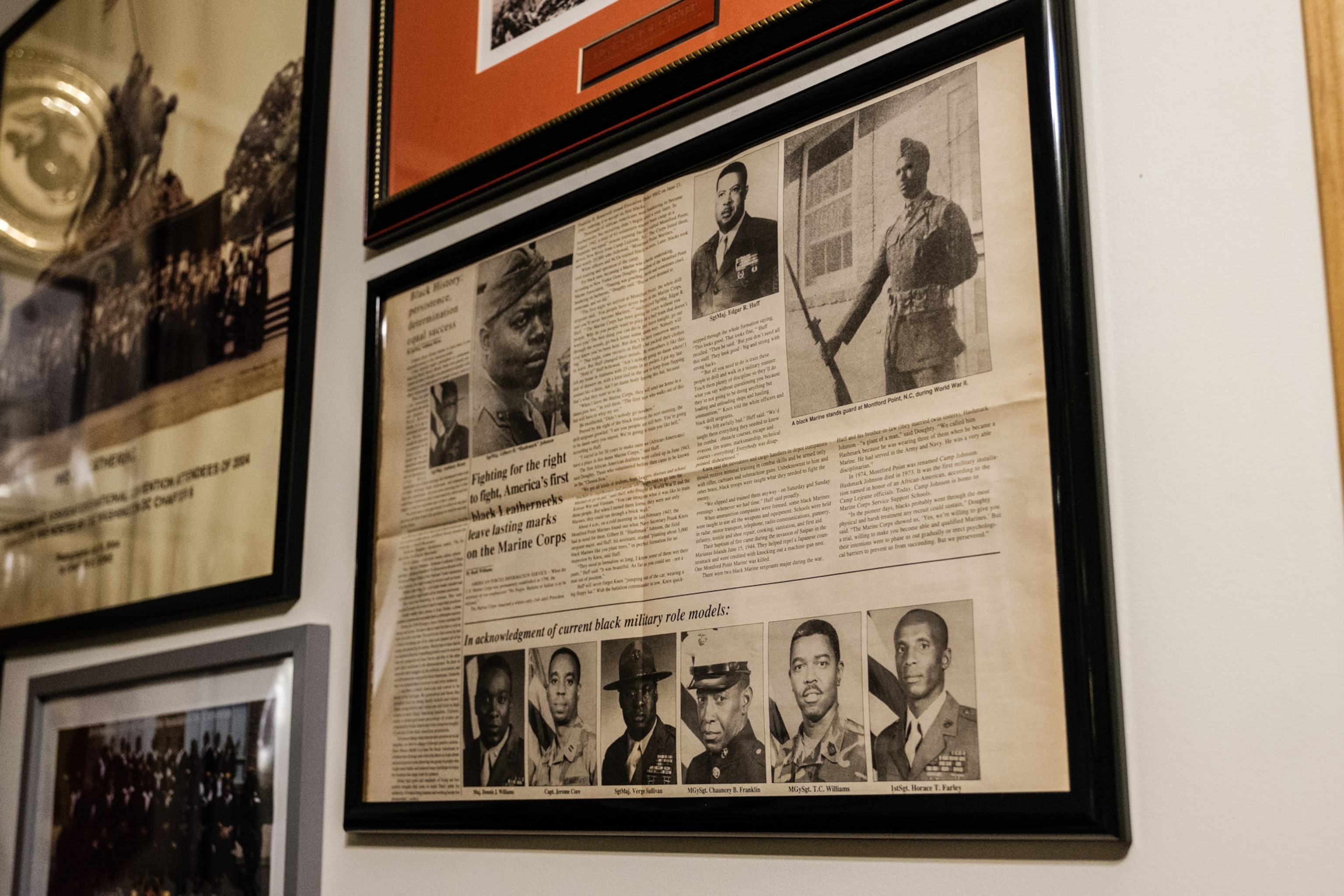
Those first weeks and months at Montford Point were an awakening. “It was awful, just awful, the things they would say and do to try and break us,” he says. After training and a stint in Korea, Wilcots later achieved his goal of becoming an architect with education benefits provided by the GI Bill. He worked alongside the famed Louis Kahn and later finished the architectural work of the renowned National Parliament Building in Dhaka, the capital of Bangladesh, after Kahn died of a heart attack in 1974.
By contrast, Marine recruits who were born and raised in the South were prepared for the brutal hazing.
“From the minute I got off that bus from Raleigh, I knew what to expect,” says John Lee Spencer Jr., who enlisted in 1944, and now lives in a retirement facility in Wilmington, North Carolina. “Racism wasn’t the word for it. It was downright ugly. It was evil. It was bad.”
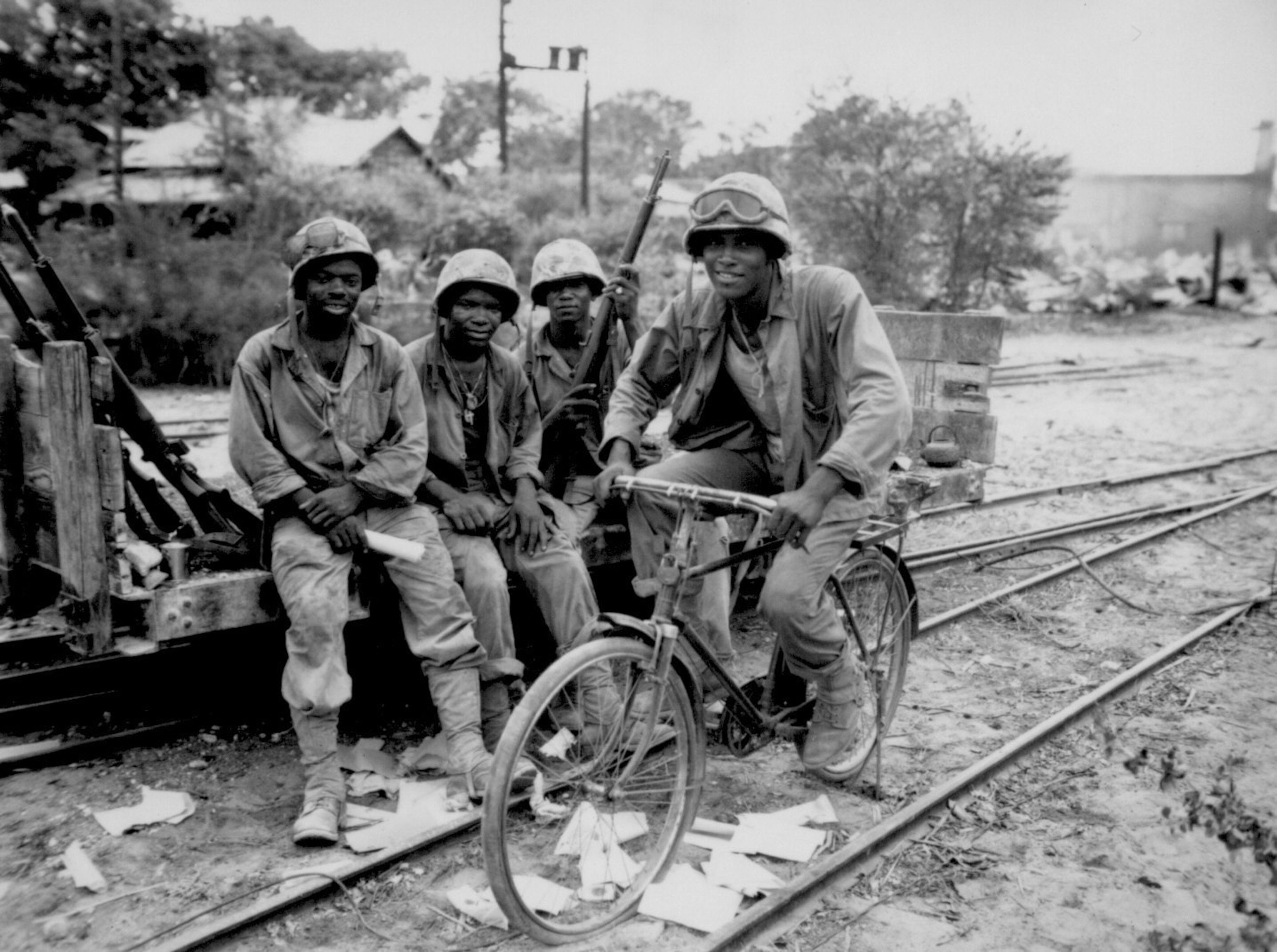
But as with other Montford Pointers, Spencer says the desire to serve his country and prove his patriotism helped him endure the abuse, especially when headed into battle. The Black Leathernecks quickly earned the respect of their peers and commanders.
“After Saipan, they sort of slacked off on calling us ‘nightfighters’ and other ugly names,” Spencer says. “When you’re fighting for your life, you don’t care who’s lying next to you as long as they’re on your side.”
At the time, Lieutenant General Alexander A. Vandegrift declared: "The Negro Marines are no longer on trial. They are Marines, period."
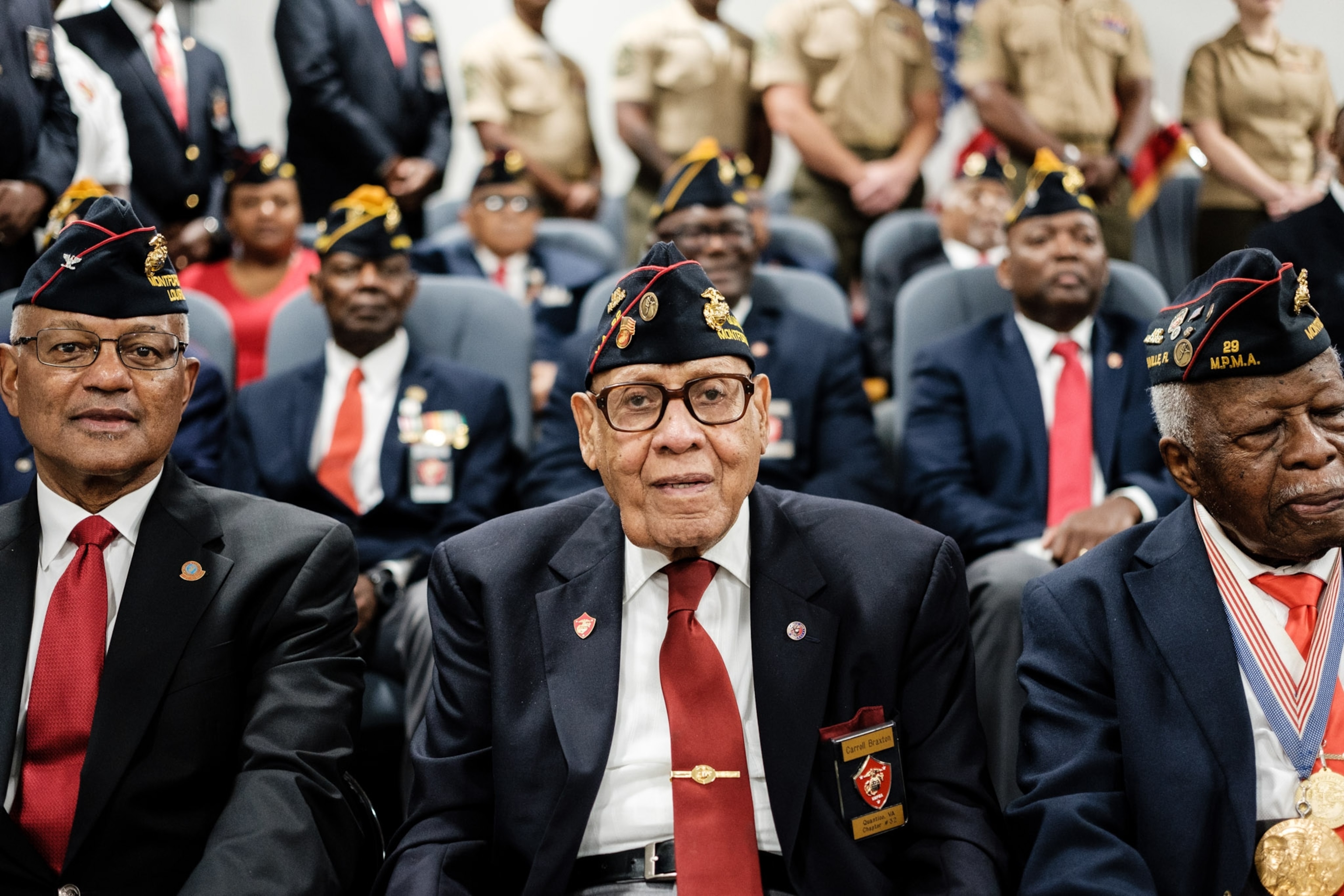
Since Montford Point, Blacks have made their mark across the military. Among them: Late Secretary of State Colin Powell, who served in the Army, and Michael Elliott Langley, who on August 6 became the first African American promoted to four-star general in Marine history. And in 1974, the former Montford Point Camp was renamed in honor of Gilbert H. “Hashmark” Johnson, one of the first African American Marine drill instructors.
But it’s recruits like Braxton, Wilcots and Spencer—their knowledge of military history and lived experience as original Montford Point Marines—that Geeter and others want to document before the voices fade away.
“The fact that they sacrificed so much, just to prove that they had the courage and patriotism to defend our country, is far too important to neglect,” Geeter says. “While there’s a family out there who may not know that they have a hero or a hero’s memory in their midst, we want to correct that.”




